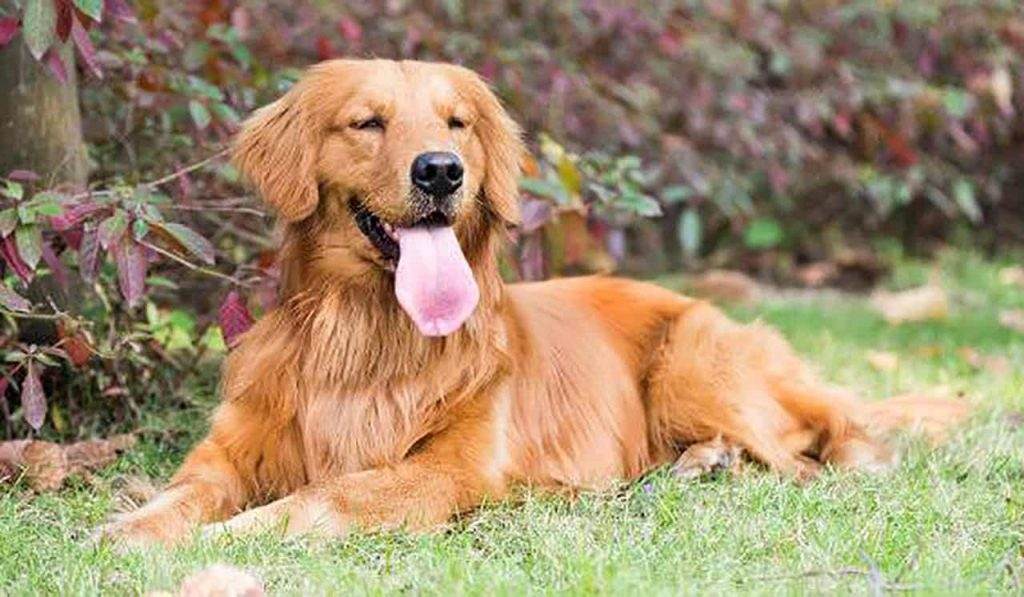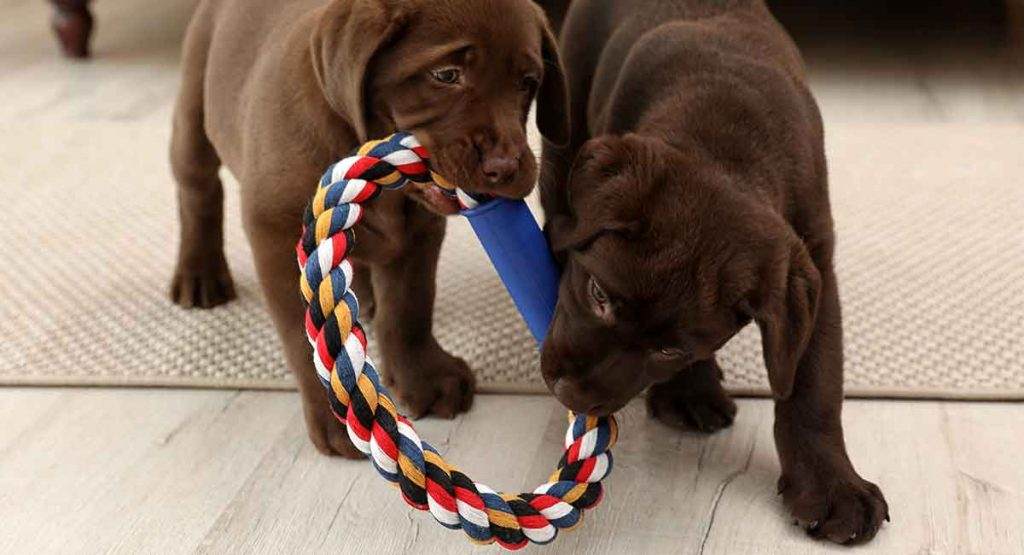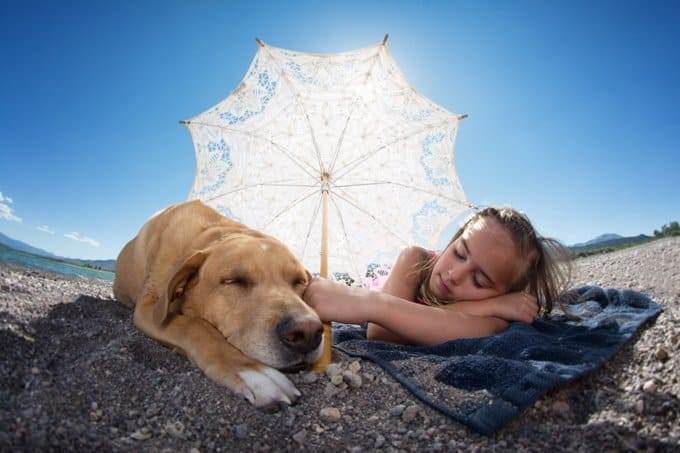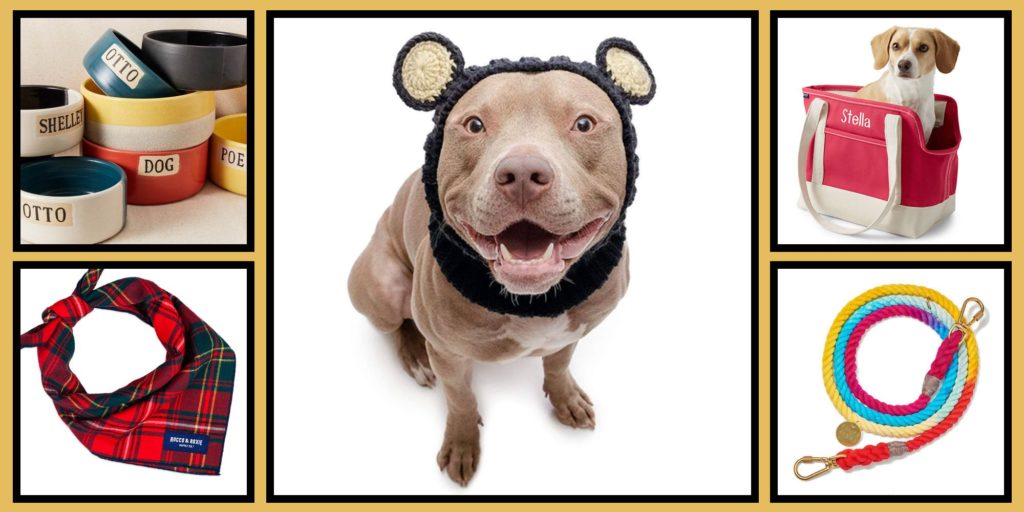Type: Hybrid
Size: The Aussiedor is a medium-size dog
Average Weight: 40-70 pounds
Average Height: 18-24 inches
Average Life Span: 12 years
Temperament: hyperactive, loyal, affectionate and friendly

The crossbred offspring of a purebred Australian Shepherd and a Labrador Retriever is known as an Aussiedor. An Aussiedor is a playful, adorable and intelligent hybrid dog. The friendly, crossbred Aussiedor is a perfect fit for families with young children as well as novice dog owners.
This hybrid dog combines the beloved traits of its purebred parents to create the best of both worlds. The adorable, sociable Aussiedor is a fan favorite among children as well as adults. This beloved crossbreed is known by different names like Aussie Lab, Aussie Lab Mix, Sheprador, and Aussiedor.
Origin of the Breed
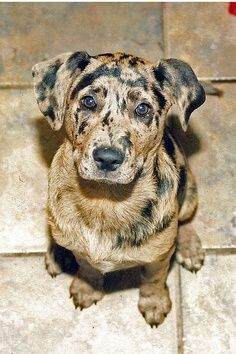
The Aussiedor is a product of crossbreeding between the Australian Shepherd and Labrador Retriever. As with all hybrid offsprings, the exact physical characteristics and personality traits of the Aussiedor cannot be deterministically predicted.
However, it is important to make a note of the personality traits displayed by the purebred parents to get an expected overview of the crossbred offspring. The traits displayed by an Aussiedor are the result of both inherited qualities from both purebred parents as well as training regimes.
Socialization, training and the environment of its development play a significant role in determining the personality of an adult Aussiedor.
Brief Family History of the Parents
The Australian Shepherd- contrary to its name- heralds from the United States and not from Australia. This skillful and obedient breed of dogs was not bred in Australia. They are believed to be descendants of sheep-herding dogs. This dog breed gained preeminence in the US after the Second World War with the growing popularity of the western style of horse riding. Rodeos and movies also popularized the breed.
Herding ranches was a characteristic task for the Australian Shepherd. The Australian Shepherd earned a reputation for being a hardworking and intelligent dog that responded positively to training. Keeping an Australian Shepherd busy and active is the key to keeping it happy.
The protective instincts of an Australian Shepherd are very sharp. This led them to also serve as herding dogs, services dogs and shepherding dogs for decades.
The beloved Labrador Retriever was originally employed by fishermen in Canada as retriever dogs on both water and land. They were also used as efficient watchdogs.
The popularity of the breed soared in Britain when the Earl of Mamesbury started using them to retrieve downed birds during the aristocratic hunting sprees. He is believed to be one of the first few people to import these dogs from Canada to Britain.
Labradors gained a reputation as competent gundogs and hunting dogs due to their potent ability to track scents and odors. The cross between these two beloved purebred parents is a guaranteed buddle of joy.
Appearance of an Aussiedor

Aussiedors are medium-sized dogs, with broad shoulders and a broad, large head- similar to their Labrador parent. Aussiedors have floppy triangular ears. The height of an adult Aussiedor ranges from 18-24 inches. They weigh around 40-70 pounds.
The exact appearance of the Aussiedor will be determined by the dominant influence of either of the two sets of parental genes. Some Aussiedors also have two different colored eyes- owing to their varied genetic components.
The Luscious Aussiedor Coat

The Aussiedor inherits the double coat from its parents. The lower layer keeps its body warm, while the top layer is water-resistant. The color of an Aussiedor’s coat will be determined by the color of its parents’ coat.
The coat of a Labrador is usually black, dark chocolate brown or a shade of yellow, while that of an Australian Shepherd maybe tricolored including colors like black, blue merle, red and red merle.
The crossbred Aussiedor offspring may have a single solid colored coat or a speckled tricolor coat. Black, grey and brown are the colors most commonly associated with Aussiedor coats. The length of coat hair may also vary in accordance with which parent’s gene produces a stronger influence.
Personality and Temperament of an Aussiedor
The Aussiedor is a playful, active, friendly dog that is loyal and well-suited for families with kids. Their hyperactive and playful demeanor makes them an adored breed. They are sociable, kind and gentle dogs that respond well to training. They are an extremely loyal dog breed and make wonderful companions.
If the influence of the Labrador side of its lineage is more pronounced, then the Aussiedor will be extremely hyperactive and energetic. Whereas, if the Australian Shepherd side of traits is more pronounced, then the dog will be more aloof upon confrontation with strangers.
However, more often than not, the Aussiedor tends to lean towards the former than the latter. Their herding instincts can be easily eliminated by diligent and early training. This is important because, with the lack of sufficient training, they begin to herd children and smaller animals.
These dogs need to be engaged in running, playing and exercising routines to help them dissipate some of their pent up energy. They love playing with kids and toys for hours. Running around in an open yard is the favorite activity of an Aussiedor. They are well-suited for various dog sports like agility and flyball.
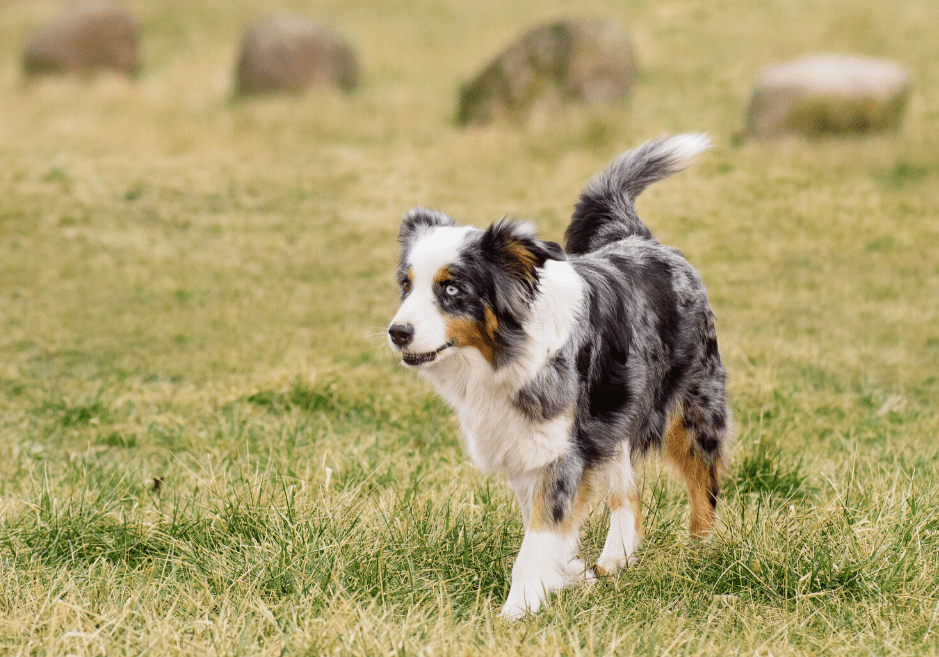
These dogs are very well-suited for households with young children. However, one always has to be cautious of proper training, before introducing the dog to the children. Early socialization of the Aussiedor puppy is always helpful in reducing any possible aloofness the dog may be experiencing.
This also plays an important role in acclimating the dog to its new surroundings. The Aussiedor acts as a wonderful watchdog due to its pronounced protective instincts. However, this can become too pronounced when the dog starts displaying territorial behaviors. Proper training can help nip this trait in its infancy.
As highly energetic dogs, they despise being locked up for more than a couple of hours a day. They can become destructive when bored and caged. Daily designated outdoor activity time is mandatory for their mental stimulation. Similarly, long periods of isolation are not good for an Aussiedor as it can suffer from separation anxiety.
This breed craves attention and company. Aussiedors are intelligent dogs that require constant mental stimulation to thrive. They also inherit a strong work drive from their parents. Inheriting the working dog traits from its parents, the Aussiedor too is predisposed toward being useful and pleasing its owner. They are strong, active and curious dogs that need to be perpetually challenged. Being busy makes Aussiedors happy.
Grooming an Aussiedor

As a master shedder, the Aussiedor requires an excellent grooming regime. Inheriting this trait from both its purebred parents, the Aussiedor too is a year-long shedder that needs weekly brushing. The frequency of brushing an Aussiedor’s coat should be doubled during the shedding season.
The coat must be brushed at least once a week during the rest of the year. Brushing can help reduce shedding and thus, should not be compromised or avoided. If your Aussiedor inherits the thick long hair of its Australian shepherd parent, regular brushing is mandatory to avoid matting.
Regular grooming is recommended for such Aussiedors. If it inherits the comparatively shorter double-coat of its Labrador parent, then you can use a damp washcloth to remove shredded hair strands from its body. The Aussiedor needs its nails clipped regularly.
Their ears need to be inspected for redness and infections. An Aussiedor’s teeth need to be regularly cleaned to get rid of the plaque build-up. Soft toothbrushes or chew-toys can be used to clean their teeth. These grooming measures need to be religiously followed to keep your Aussiedor healthy and happy.
The Health Concerns of an Aussiedor
The Aussiedor inherits the health concerns and complications of its purebred parents. However, like many hybrids, the offspring possesses a higher possibility of by-passing the genetic ailments of its purebred parents- due to a much better developed immune system.
Labradors live for about 10-12 years and the Australian Shepherd has a life expectancy of about 12-14 years. Accordingly, the life expectancy of an Aussiedor is around 12 years.
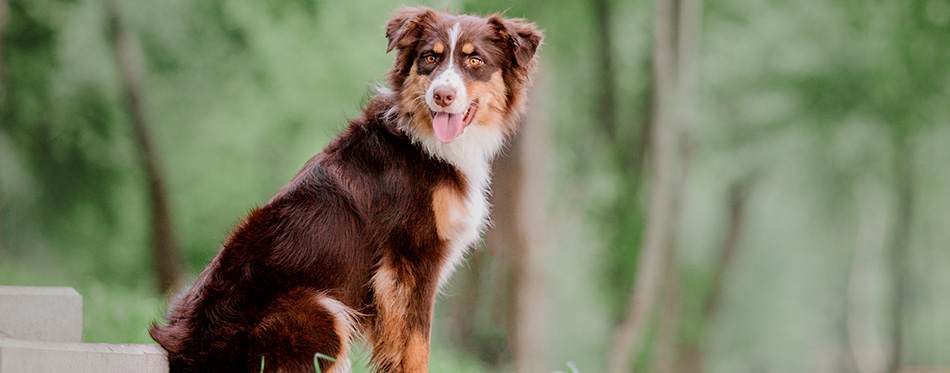
The overtly-active demeanor of the Aussiedor makes it prone to bone and joint ailments. Hip and elbow dysplasia as well as early onset arthritis are common health problems experienced by the Aussiedor.
The malformation of the joint results in extreme pain. This is also a result of its lineage. Hailing from two active purebred parents- who are both equally predisposed toward the same ailments- the Aussiedor too suffers from similar complications. The proposed remedy for such health concerns is to visit the vet at the earliest, as medication- like anti-inflammatories and palliative medicines- can effectively reduce pain and manage these medical conditions.
As a medium-large dog bred, the Aussiedor is prone to suffering from bloat or Gastro Dilation Volvulus (GDV) that causes distressing pacing and stiffness of abdominal muscles. The vet must be notified as soon as the dog starts experiencing these symptoms.
Cataract and Progressive Retinal Atrophy are also a common health problem among Aussiedors. These conditions need to be assessed early to avoid vision loss.
The Perfect Diet for an Aussiedor
The diet of Aussiedors has to be closely monitored as they are prone to obesity. Inheriting this predisposition from their Labrador parent, they gain weight pretty easily. A high calorie, nutrient-rich dry food diet may be best suited for Aussiedors.
They should be encouraged to eat slowly as they have a significantly large appetite. A slower feeding bowl may be used to aid in this process. As the breed is prone to Bloat, it is recommended that their food be rationed into smaller portions.
Aussiedors can be feed 3-4 cups of dry food a day. Owners have to monitor Aussiedors closely as they usually inherit the Labrador’s trait of chewing everything in sight. This mouthy behavior can be corrected with early socialization and training.
Exercise Routine for an Aussiedor
Exercise and training are important components of raising a healthy and obedient Aussiedor. As an energetic, active and playful breed, Aussiedors need plenty of exercise and training. Owing to their playful nature, they love running around parks and backyards Playing fetch and ball-games is a favorite among Aussiedors. This is inherited from its highly energetic purebred parents.
An Aussiedor also loves playing with toys. Aussiedors thrive best in large fenced farms, where they can run around to their heart’s content. Hence, they are often referred to as ‘farm dogs’. Daily walks can be a useful form of exercise included in the routine. They need at least two walks daily to sufficiently satisfy their high-spirited, energetic selves.
Aussiedors love playing and running around leash-less. As the Aussiedor loves the outdoors, its mental and physical health and well-being will be affected by the time devoted to playing and running around. Two hours of exercise daily is recommended for an Aussiedor. This breed may be a poor choice for someone who cannot competently manage highly-energetic and hyperactive dogs.

Training an Aussiedor
Early socialization is an indispensable part of training an Aussiedor. Although the Aussiedor is an easy-going dog, this will help the Aussiedor be congenial toward other dogs and people.
Socialization is important to counter the herd instincts that develop quite early in Aussiedors- owing to its genetic framework. They are also extremely mouthy- constantly prone to chewing on everything around them. This destructive behavior can be avoided by keeping them engaged in rigorous training exercises.
Command following skills need to be inculcated in the Aussiedor. Developing key command words are an important part of the training regimen.
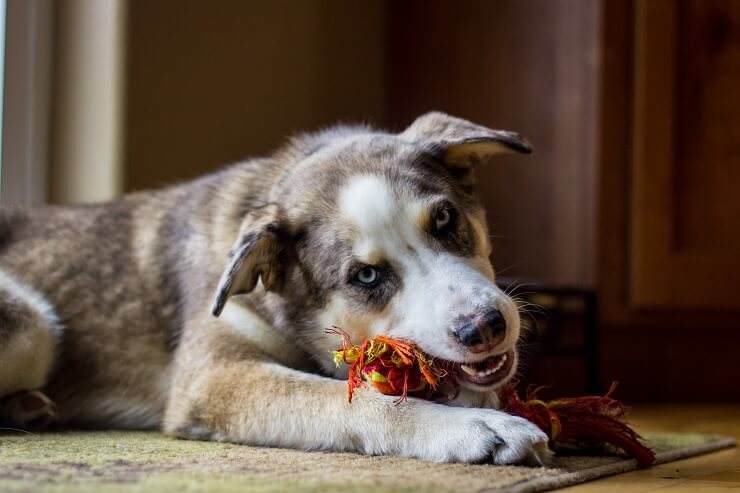
Effectively training Aussiedors is necessary to avoid the development of aggressive behavioral responses to strangers. Using pinch-collars and other aggressive methods may be counterproductive as they may result in the dog becoming completely disinterested in the training regime.
Positive reward-based training sessions are more effective in producing results. Treats can be used as rewards for successfully following commands. Proper training measures and schedules lead to the avoidance of aggressive behaviors. Territorial instincts can be effectively curbed by commencing proper early socialization and training.
Ensuring the safety of the overly active Aussiedor necessitates proper training to get used to leash-walking. The Aussiedor- by following voice commands- will learn road awareness by such training exercises.
The upside is that it is relatively easy to train Aussiedors. They are a breed that inculcates command-following quite easily. Agility training is a good way to provide both mental and physical stimulation for your dog.
Is an Aussiedor a Right Fit for You?

Aussiedors are fan favorites, however, they may not be suitable pets for people who are away for significant periods of time. As they need constant companionship, such a household will not be conducive to the growth of a healthy Aussiedor.
Small confined spaces are not suited for this hyperactive, medium-sized dog. Apartments that are small and cramped may not be the best fit for such a breed. Similarly, since this breed is a hyperactive one, it requires dedicated exercise routines and leash-less running sessions. Successfully managing hyperactive dogs is a task. Thus, those who feel unprepared to manage such forms of behavior should reconsider Aussiedors as pets.
As Aussiedors are intensive shredders the dog parents also have to invest considerable amounts of time grooming them. An ideal household for an Aussiedor is one where it can engage in endless activities and playtime. An open yard- where they can run around- is best suited for a healthy Aussiedor.
A proper training schedule also needs to be established for these agile and active dogs. The Aussiedor is compatible with families that have kids who can engage in playing games with it. As an extremely friendly breed, the Aussiedor is an excellent match for such households. They love and adore children, as a result, Aussiedors will thrive in households with children.
Getting an Aussiedor Pup

If you are sourcing the Aussiedor puppy from a breeder make sure certain measures are undertaken to ensure the safety and health of the puppy.
Visit the breeder to get a better sense of the facility. Meet the parents of the Aussiedor, if possible, to get a fairly certain idea of the kind of dog you can expect. Gauge their personalities and temperaments, because chances are that the Aussiedor offspring will display similar behavioral traits. Most importantly, you should ask the breeder about health tests.
Discuss the results of the health tests conducted on both the Labrador as well as the Australian Shepherd. This is of paramount significance in determining the health of your Aussiedor pup. It is relatively easy to find Aussiedors in rescue shelters as both of its parents are popular breeds.
Adopting an adult Aussiedor can be beneficial in terms of successfully gauging its personality traits and temperament. Moreover, it will help provide the Aussiedor with a loving and caring home.
Pros of owning as Aussiedor
- Hyperactive, agile, friendly
- Loyal, intelligent and strong
- Exceptional watchdogs
- Child friendly
- Loving and affectionate
- Gentle pleasing demeanor
Cons of owning an Aussiedor
- May display strong herding instincts
- Suffer from separation anxiety
- Maybe aloof with strangers
- Heavy shredders
- Constant engagement needed to prevent them from becoming destructive
Table of Contents

